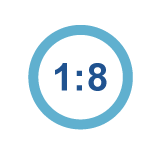About donation
The basic path of organ donation
The donation process begins with a decision. You decide you want to help people with end-stage disease by donating your organs when you die. People most frequently become donors following a stroke, heart attack or severe head injury.
Organ donation resources
Advances in transplantation science are helping to save more lives than ever. But there is a critical shortage of organ donations and a continually-growing list of patients waiting for a life-saving transplant, because there simply aren't enough organs for everyone who needs them. Learn more about organ donation at organdonor.gov![]()
Living donation and kidney paired donation
The demand for organs far exceeds the supply. Living donation, including kidney paired donation, offers other choices for patients, and it extends the supply of organs available to candidates on the transplant waiting list. Learn more.
Deceased donation
The organ donation process begins with the donor, but many individuals along the way are involved in making sure the gift of life is honored. Learn more about the steps involved in deceased donation.
Donor matching system
Whenever an organ becomes available, it’s matched to patients through a centralized technology platform. Learn more about the donor matching system.




